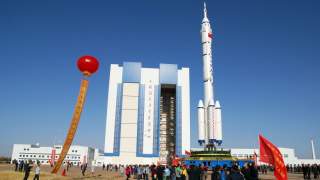How China Plans to Utilize Space for A2/AD in the Pacific
Due to the high level of reliance the US has placed on its space capabilities, PLA strategists see it as a weakness that can be exploited.
On the strategic side, the US needs to fully prepare for the fact it will not have anything like the unilateral space superiority it in had in the past, and could potentially lose critical space capabilities altogether. Mitigating the asymmetrical advantages of a first-strike on space capabilities should be a key concern for the US.
Hardening satellites, engineering stronger cyber defenses, creating an ASAT defense weapon, and ensuring that other platforms can substitute for space are potential options. It may also be possible to seek agreement with China considering their own growing reliance on space. An ASAT ban or spacefaring code of conduct would both go a long way to preventing catastrophic ramifications in space and potential uncontrolled escalation on the ground. In broader terms, however, China is steadily emerging as a peer competitor in Asia and the Pacific, and the U.S. must both recognize and prepare for this fact.
Anthony H. Cordesman holds the Arleigh A. Burke Chair in Strategy at CSIS. His current projects include ongoing analysis of the security situation in the Gulf, U.S. strategic competition with Iran, the conflicts in Syria and Iraq, a net assessment of the Indian Ocean region, Chinese military developments and U.S. and Asian assessments of these developments, changes in the nature of modern war, and assessments of U.S. defense strategy, programs, and budgets
Joseph Kendall at the Center for Strategic and International Studies (CSIS) for the Burke Chair in Strategy.
Image: Wikimedia

